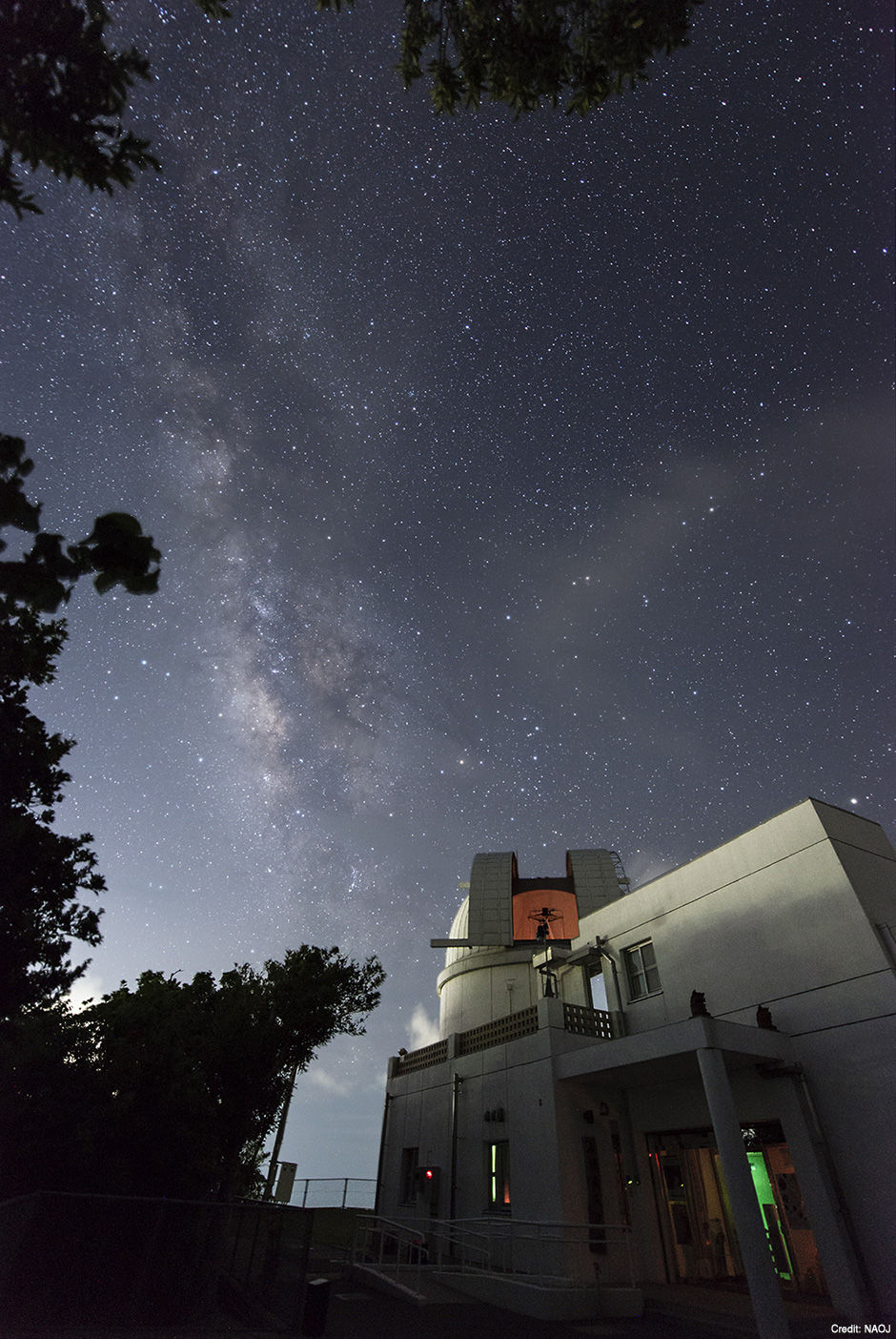Ishigakijima Astronomical Observatory and the Summer Milky Way
Night Scape Photograph・

This is the summer Milky Way as seen from Ishigakijima Astronomical Observatory located in Ishigaki City in Okinawa Prefecture. Ishigakijima is at a lower latitude than the Japanese Island of Honshu, so the widest portion of the Milky Way can be seen high in the sky. During the summer in Ishigakijima, there are many clear days and the air is pristine, making it the best time for observations. In this season, many guests visit the stargazing parties at Ishigakijima Astronomical Observatory, but observations using the 105 cm diameter MURIKABUSHI Telescope, the largest in the Kyushu and Okinawa area, are also actively pursued.
Astronomical Observatory on a Southern Island with a Full Sky of Glittering Stars
Located approximately 2000 kilometers from Tokyo on Ishigakijima in the Yaeyama archipelago, Ishigakijima Astronomical Observatory is a NAOJ observational research facility in the southwestern extremity of Japan. The latitude of Ishigakijima is 24 degrees, making it 10 degrees lower than Tokyo. In addition to being able to see 84 of the 88 constellations, and being able to see all 21 of the 1st magnitude stars in the entire sky, the quality of the geographic conditions is superb. The air feels little effect from the jet stream, making the air perfectly clear. During summer we can often see a green flash, an instant of bright green light as the Sun is on the horizon of the sea at sunset. At night during this season, a wonderful sky of stars stretches out overhead. The Milky Way appears as a bright belt of light stretching from the southern sky to directly overhead. Many guests visit Ishigakijima Astronomical Observatory’s stargazing parties, and a chorus of delighted voices fills the night. After the stargazing parties have finished, as the silence returns under a sky full of stars, observations begin using the 105 cm diameter MURIKABUSHI Telescope to pursue the mysteries of the Universe.
Text by: Hidekazu Hanayama (Ishigakijima Astronomical Observatory)
Translation by: Ramsey Lundock (NAOJ)
Image Data
| Camera | Nikon D800E |
|---|---|
| Lens | NIKKOR 14-24mm f/2.8G ED |
| Exposure | 20 seconds×3 (composite of 3 images) , f/2.8, ISO1600 |
| Date | 21:35 August 6, 2013 (Japan Standard Time) |
| Photographer | Hideo Fukushima |
| Credit | National Astronomical Observatory of Japan |